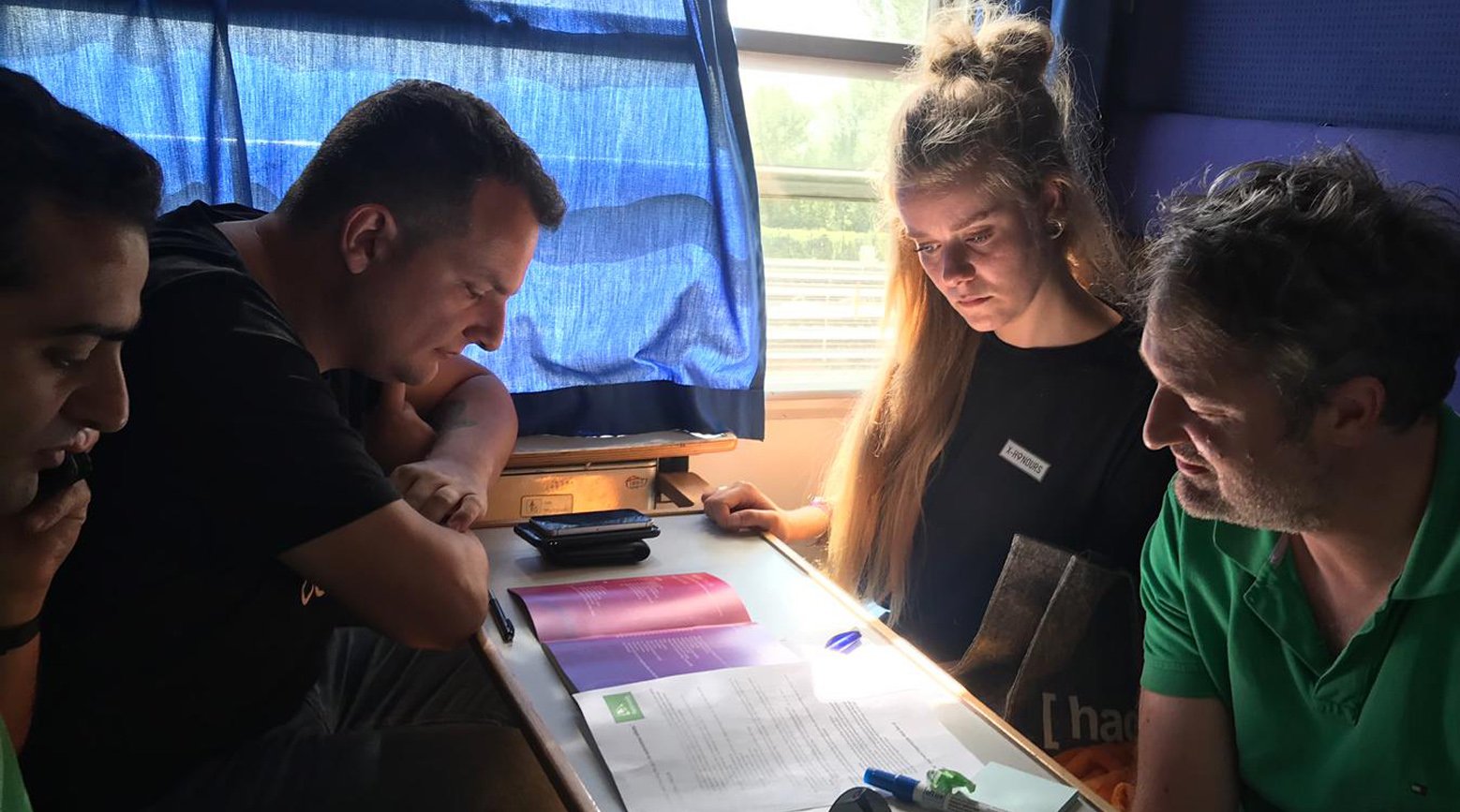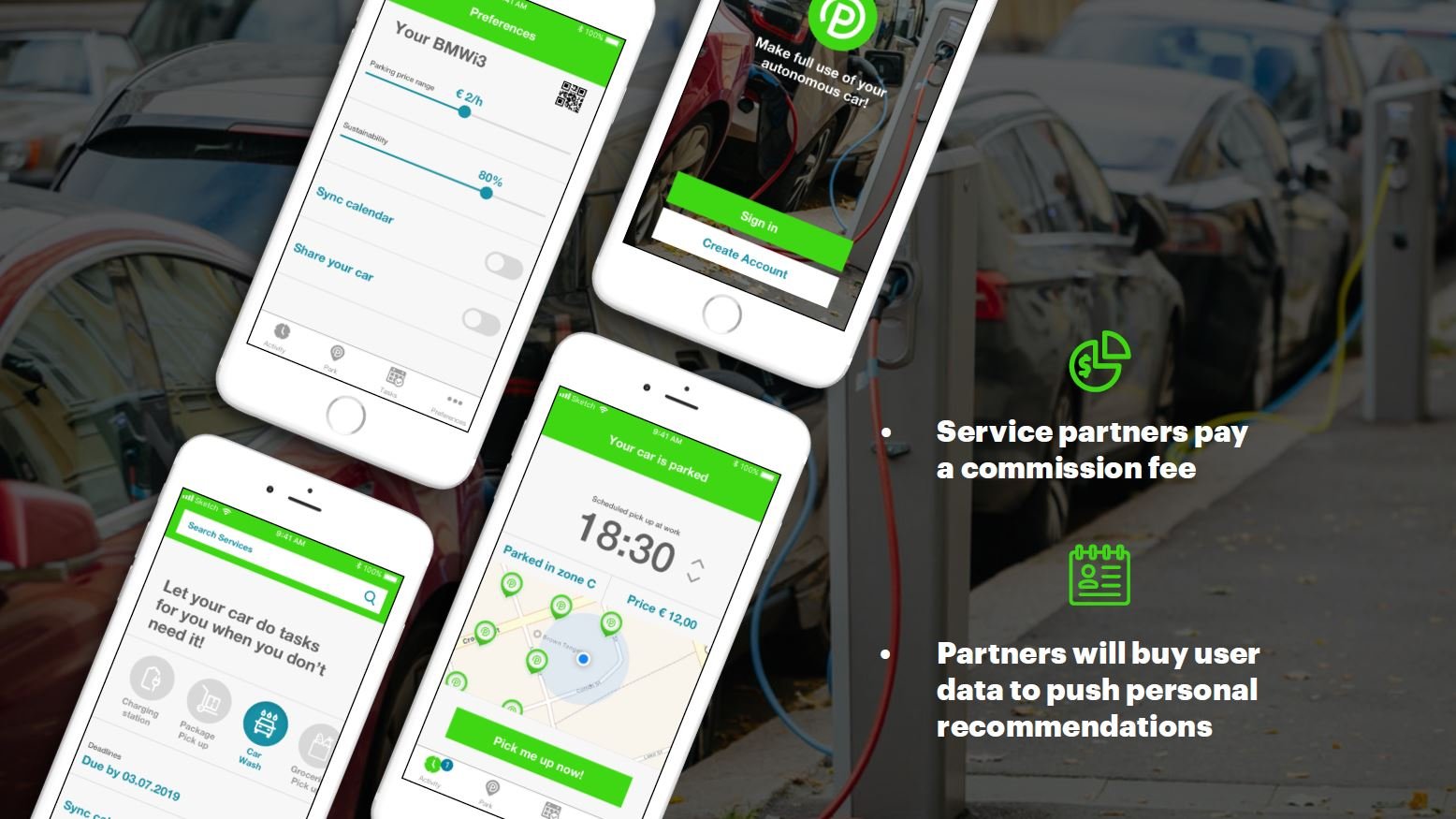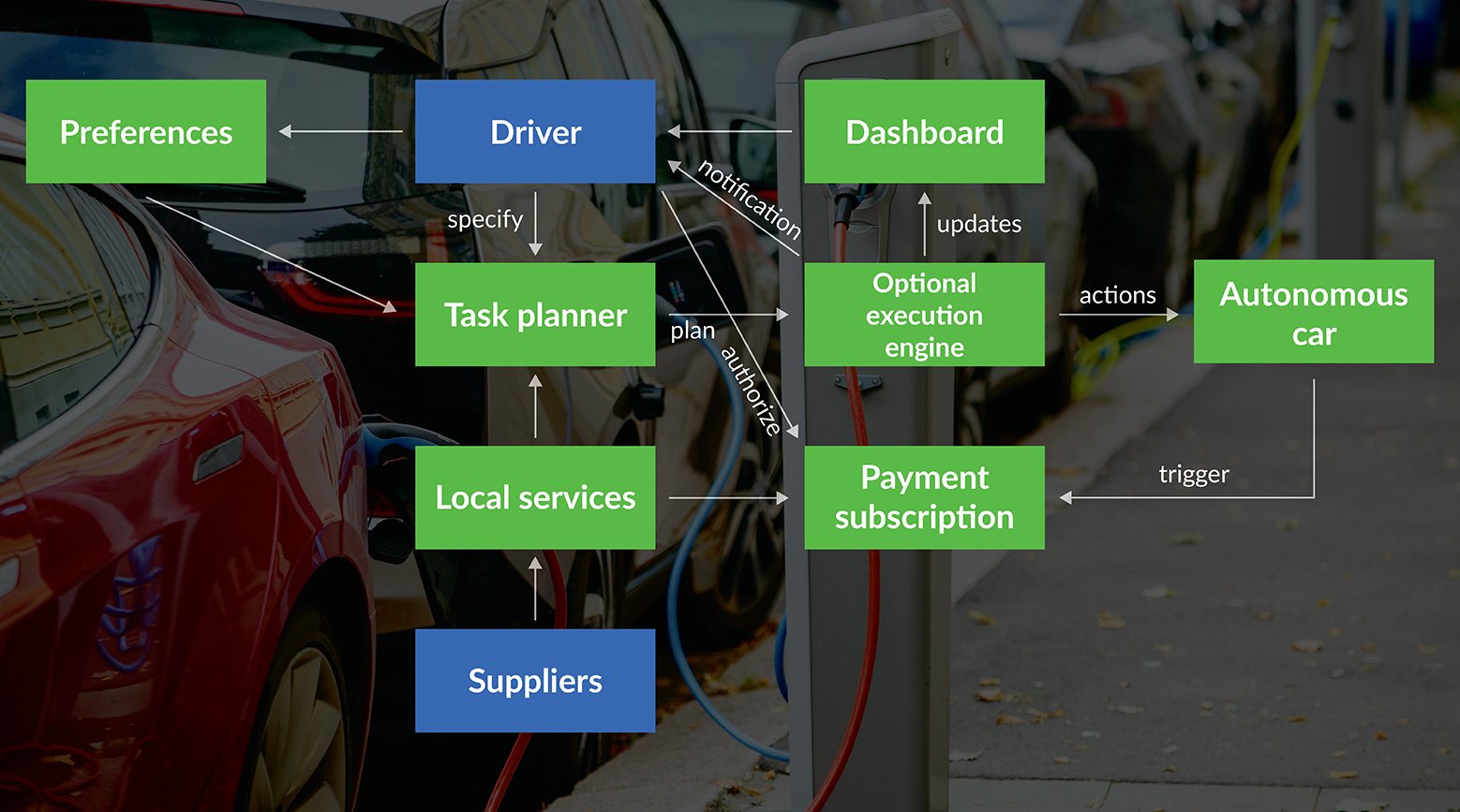What if your car can do the groceries?
Cars are simply ordinary objects after being parked. Or are they? In a future where consumers can purchase their own autonomous vehicle (AV), the concept of parking might look entirely different. Why not send your car out to do some time-consuming tasks for you? Make it your own personal assistant. During the Hackatrain 2019, a 24-hour hackathon on a train, our Itility team zoomed in on this use case and came up with a mock-up and a minimum viable product (MVP).
Your autonomous vehicle has been parked. What’s next?
For Itility, this year’s Hackatrain was all about autonomous mobility. We joined this hackathon with our team: PILSI (Itility’s core values translated: ‘Passion, Content, Deliver, Together, Innovation’). With 3 Itility engineers, a UX designer from MobGen, and a student from NHL Stenden, team PILSI worked on a challenge defined by ParkMobile and BMW. The challenge: ‘How will autonomous vehicles cope with situations where passengers enter-, leave-, or have left the AV?’
Team PILSI decided to focus on private AVs. After all, shared autonomous mobility is not the only future scenario and private AVs could be an interesting transition phase. So, what happens after your autonomous BMW drops you off at your company? Does it park itself and wait for you? After the train-ride to Berlin, our team came up with an alternative concept: “Don’t use a smart object in a dumb matter. Simply make the AV your personal assistant after it has fulfilled its transportation duties.” Interact with your car while you are at work by giving it tasks: let it do the groceries, pick up your packages, or even enable it to power your office building (an AV as a PSU).
 Team PILSI working on the challenge in the Hackatrain
Team PILSI working on the challenge in the Hackatrain
Your car as personal assistant: schedule his day
With the concept defined, the development phase took off. Team PILSI had a huge advantage because of their multidisciplinary composition. Due to the different perspectives of team members, aspects like usability, business value, and technical implementation were all equally considered. This eventually resulted in the PILSI app: a mobile application where users could set the behavior of their cars when they are not physically occupying them. The app takes into account cost efficiency, activity planning, and even the possibility of sharing your car.
 The digital mock-up of the mobile application
The digital mock-up of the mobile application
Looking at the technical implementation, an MVP was made where 3 APIs were used and connected to each other via a Material Design Angular app. The FINN ‘banking of things’ platform took care of payments by means of autonomous transactions. To optimize the time required for the car to perform its tasks, FINN was coupled to the Bing Maps platform and ParkMobile. These APIs allowed for navigation in both parking and driving scenarios.
 Software architecture of the PILSI MVP
Software architecture of the PILSI MVP
Proudly facing the future with new ideas: #Hackatrain2019 was a success
Looking back at the event, team PILSI is proud of their outcome. “With an out-of-the-box view and strong user-focus, we developed a solution that adds real business value. Working with a multidisciplinary team and discussing our ideas with business coaches, in our view, was the key to this success. During the hackathon we faced many challenges, met interesting peers, and gained new experiences. But most importantly: we had a great time with a lot of learning. Let’s hope we can soon let our cars do the groceries.”
An impression of the Hackatrain 2019






